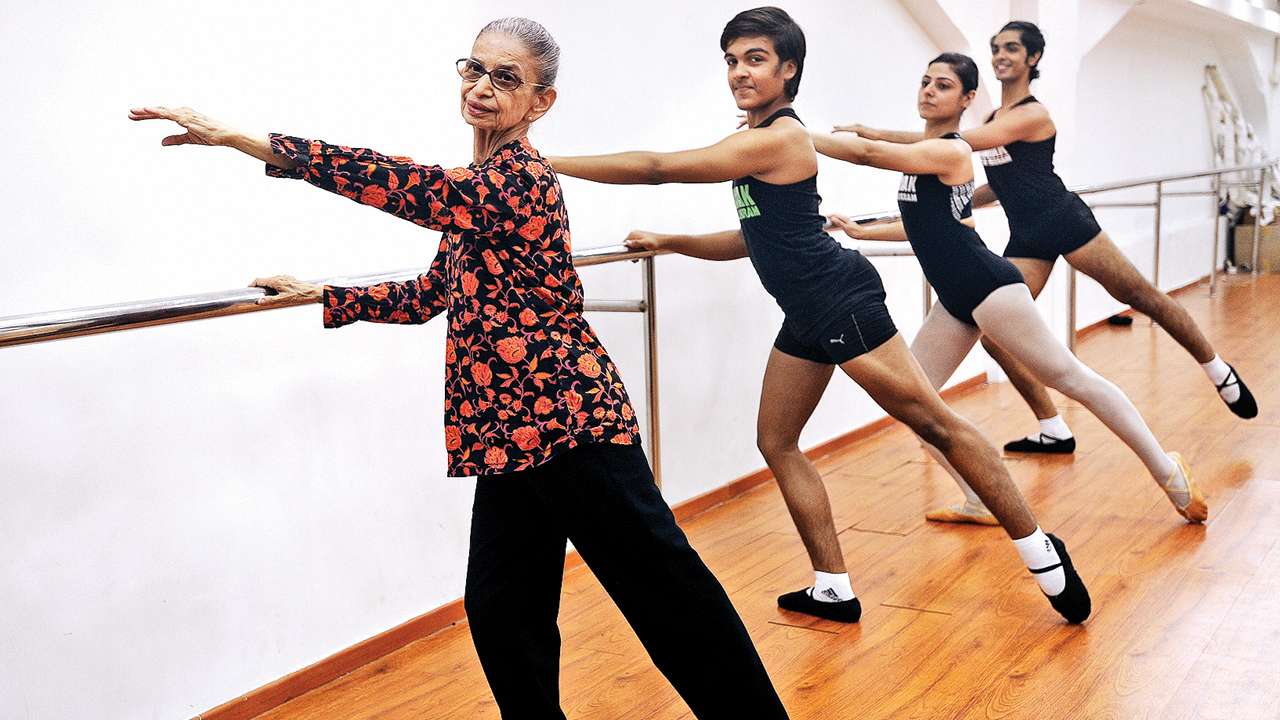
At the Shiamak Davar Dance School in Central Mumbai, students are being put through paces as they warm up for their ballet routine. She may be at the other end of the hall, but septuagenarian Tushna Dallas can spot a student slouching. She calls out sharply "Square shoulders! No slouching!"
Though she always loved dancing, it was on a trip to the US as a child that exposed her to ballet at a young age. "My mother was there to study interior designing and took me along," she recounts.
When watching The Ice Capades (ballet on ice), Dallas remembers being smitten by the dancers' grace and form. "I don't think The Ice Capades exists anymore with figure skating replacing it, but I remember being impressed with what I saw – and even told mom, 'This is what I want to do.'" With no ice back home, Dallas was dejected. But the then four-and-half-year-old soon found ballet, which "had the same moves; only different shoes." This time she stuck to her guns and pursued it through school. Following which, she told her family back in Bombay that she wanted to continue with ballet, not college. "My family was against it! 'Chokri nee jaat, you don't dance,' I was told. Since I'd learnt the piano they said pursue that if you want, but I insisted I wanted the ballet." Seeing that she was not going to back off, her family relented, finally letting her apply for international courses. "I was rejected by most places. Though I had done it through school, it was not considered formal training," she recalls. The London College of Dance and Drama (run under the Board of the Imperial Society Teachers of Dancing) accepted her.
"Now this was a teacher training course and I wanted to be a ballerina. But the Good Lord seemed to want me to be a teacher so that's what I became."
In London, she learnt imperial ballet, Chiquita ballet, Latin American dance, European folk dance, ballroom dance, theatre, and natural movement among other forms. "Though I qualified in nine forms of dance, the other forms have largely remained on paper as I concentrated on ballet," says Dallas, who graduated in 1962.
She would return to teach at Kodaikanal's Presentation Convent where the nun-in-charge (herself trained in ballet) offered Dallas a job at the princely monthly salary of `5.
Two years later, she returned to her alma mater in London for a higher degree before heading to Bombay. Dallas remembers wanting to go back to Kodaikanal ("I felt I could live there my whole life.") till an old teacher warned her of stagnation if she did not leave her comfort zone. "That was how I came to Bombay and began with a batch of four pupils at Cathedral School, where I first trained the school children and then went on to rent their premises and start my own ballet school." Initially, most students were Parsis with a few Christians. "Today, I find all the other communities coming to learn except Parsis – I think they like to go to their own teachers."
While her own institution, The School of Western Dance and Ballet, was quickly growing, there was pressure to settle down. "I met several prospective grooms till I settled for my husband who was with Telco. I told him I would not give up my dance school for anything and he agreed!" she laughs, remembering how that sounded ahead of its time. "But I think it's always better and easy in an arranged marriage," she insists.
While her daughter Khushcheher is running her school, Dallas herself teaches at Shiamak Davar's dance classes, where she works with the One-Year Programme students. "I wanted to do this with my own school, but they are young and school-going with so many engagements, it is unthinkable that they would (or their parents would allow them to) take a year off to just pursue dance. Here, I work with grown-ups– it has been quite fulfilling." She recalls suggesting auditions at first and teaching only those who made it. "But Shiamak convinced me that I must teach all those who were part of the OYP." It took her a while to change the international idea of admission: an orthopaedic exam to qualify for training.
She also admits that unlike the sprinkling of an odd boy here and there, today, she sees a lot of them. "Boys are encouraged to come dance because the place is headed by Shiamak," she says and observes, "If I were to teach on my own, I wonder if the guys would come at all. Girls don't seem to mind being trained by both men or women, but guys seem to want the figurehead to be a guy."
She laments how dance, ballet in particular, is not given its due in India. "Dance has languished for lack of a centre, a home, dedicated funding and diligent daily pursual. Look at the world, Bolshoi Theatre, and the Royal Ballet.
Today, ballet is being diluted with poor teaching..."
Yet she insists she's happy that she took to teaching than performing. "I brought ballet to a place that had almost no ballet," says this teacher, who counts Shiamak Davar, Ashley Lobo, Terence Lewis, Annabelle Lunawat, James D'Silva and Pia Suthaliya among others as her students.